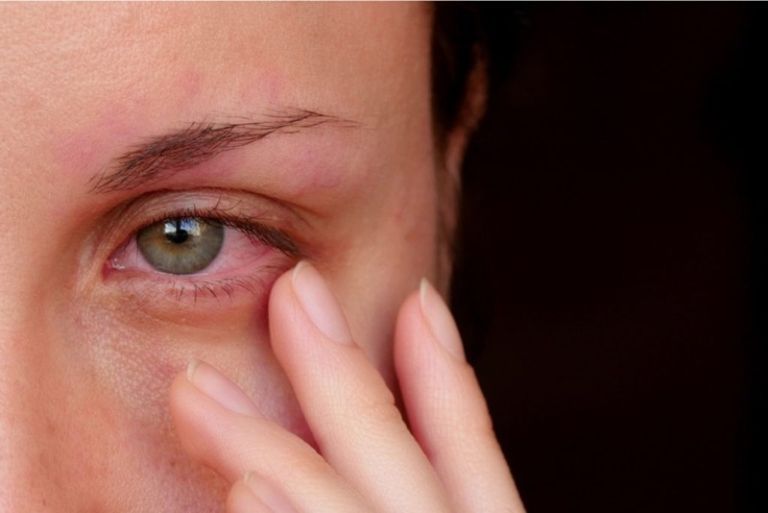What is Dry Eye?

Dry eye occurs when the natural tear film is not produced in sufficient quality or quantity to keep the eyes moist.
Dry eye occurs when the eyes cannot produce enough natural tears, or when the tears are of poor quality to adequately lubricate the corneal surface. The eyes may feel dry, burning, irritated, red, or sensitive to light, and vision may become blurry at times. Many patients describe it as a sandy or gritty feeling in the eyes, or eye fatigue after prolonged focus.
This condition is common, especially among patients who have undergone refractive surgery such as LASIK or PRK. Studies show that up to 50% of LASIK patients experience dry eyes within the first week after surgery, which decreases to 40% after one month and 20–40% after six months.
The primary cause comes from the corneal flap created during LASIK — a step where a thin layer of corneal tissue is cut to correct myopia, astigmatism, or hyperopia. During this process, sensory nerves beneath the corneal surface are severed, disrupting communication between the cornea and the tear glands. This interruption reduces tear production and can lead to temporary or prolonged dry eye symptoms.
In addition, post-surgical inflammation, dry air-conditioned environments, infrequent blinking when using digital devices, or changes in the corneal shape that alter eyelid interaction with the eye surface can all worsen dryness.
Symptoms of Dry Eye After Refractive Surgery

Post-surgical inflammation may exacerbate dry eye symptoms
Patients with post-refractive dry eye may experience the following symptoms:
- A dry, burning, or gritty sensation, as if sand is in the eyes
- Redness or excessive tearing
- Light sensitivity, especially in daylight
- Fluctuating or blurry vision due to an unstable tear film
- Eye strain and difficulty focusing, particularly when using a computer
In some cases, temporary blurring occurs when tears are unevenly distributed across the eye’s surface, disrupting light refraction. However, this is usually short-term and improves within 3–6 months with proper care.
How to Prevent Dry Eye Before and After Refractive Surgery
To minimize the risk of dry eye, refractive surgeons recommend:
- Comprehensive pre-surgery examination: to detect early signs of dry eye or tear gland dysfunction.
- Treat existing dry eye before surgery if any abnormalities are found.
- Choose less invasive procedures such as SMILE or Phakic ICL, which do not alter the corneal surface and therefore rarely cause dry eye.
- Attend regular post-operative checkups to detect and treat dryness early.
Ways to Relieve Dry Eye After Surgery

Using artificial tears for 3–6 months can help restore the corneal epithelium after surgery
1. Use Artificial Tears
This is the most common and effective treatment. Artificial tears have similar properties to natural tears and help maintain moisture, lubrication, and protection for the corneal surface. Regular use during the first 3–6 months can significantly relieve dryness, particularly in air-conditioned environments or when working on screens.
2. Maintain Healthy Daily Habits
- Blink frequently when reading, using your phone, or working at a computer.
- Avoid dry, dusty, or windy environments; use a humidifier if needed.
- Do not rub your eyes or stay up late, especially during recovery.
- Wear protective eyewear outdoors, especially when swimming or riding a motorbike.
3. Add Nutrition to Support Tear Glands
Studies show that Omega-3 fatty acids (found in salmon, chia seeds, and walnuts) and vitamin A help improve tear quality and reduce inflammation in the lacrimal glands. In addition, drinking at least 2 liters of water per day helps maintain overall hydration and supports a stable tear film.
How Long Does Post-Surgery Dry Eye Last?
Most patients notice improvement within 3–6 months, as corneal nerves regenerate and tear gland function recovers. However, for those with pre-existing dry eye, symptoms may persist longer and may require additional treatments such as mild anti-inflammatory eye drops or punctal plugs to retain tears.
A modern alternative increasingly recommended by refractive surgeons is the Phakic ICL – a non-corneal procedure that eliminates the risk of post-surgery dry eye.
The Phakic ICL is a biocompatible Collamer lens implanted between the iris and the natural lens. Since it does not involve cutting or reshaping the cornea, it leaves corneal nerves intact and maintains a stable tear film. Its central 0.36 mm KS AquaPort design allows natural fluid circulation inside the eye, completely avoiding tear duct blockage – a common cause of dryness after LASIK or PRK.
Clinical data from STAAR Surgical confirms that Phakic ICL does not cause dry eye syndrome and has a 99.4% patient satisfaction rate.
Dry eye after refractive surgery is a common but manageable condition when diagnosed and treated properly. To reduce risk, patients should undergo thorough preoperative evaluations, choose a procedure suited to their eye anatomy, and follow post-surgery care instructions carefully.
Tip: If you are considering refractive surgery but are concerned about dry eye, schedule a comprehensive eye examination to assess your tear gland condition and receive personalized advice on the best treatment option for your eyes.

 vi
vi 10-Nov-2025
10-Nov-2025











 0916.741.763
0916.741.763 Appointment
Appointment